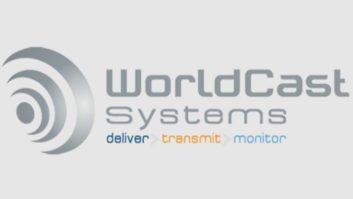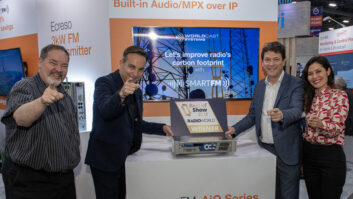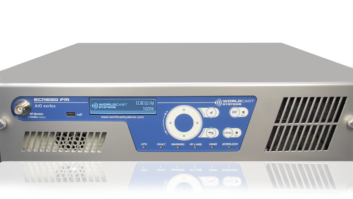
LUBBOCK, Texas — Ramar Communications is a locally owned broadcaster operating several Fox-affiliated FM and TV stations about an hour and a half east of the New Mexico border and an hour and a half south of Amarillo. We operate with an attitude of excellence. As chief engineer, that means finding and using the best quality equipment at the best price for the job.
My first experience with the Audemat Digiplexer happened just over a year ago, when we were embarking on a new station build. For a brand-new build we needed everything new, so the fact that the Digiplexer could also offer transmitter site remote control and RDS, in addition to audio processing, definitely sparked my interest.
There is an understandable tendency with audio processors to opt for the big name brands, but I believe it is important when purchasing new equipment to define the goals of the system and then research the best fit for this job, all the while keeping an open mind.
In practice, this means we have a diversity of systems in operation.
While the functionality that the Digiplexer was a bonus, I was still looking for the highest quality possible and made sure I demoed the system before even thinking of purchasing. Not only did the sound quality match up to the level we expected, but I believe that it was better than other processors on the market; this was our main reason for selecting the Digiplexer system.
In reality, there are only a few things that control the sound of an audio processor: Bit depth, IO quality and algorithmic performance. The Digiplexer’s 24-bit/192 kHz audio and a studio-like quality for a broadcast station is not available in any other processor.
It really is not important how many bands of processing are made available. Often, the more there are, the worse the performance. I believe that the true determining factor is whether the processor samples at a rate high enough to construct the waveform properly on air without artifacts that fatigue the audience.
In side-by-side comparison tests with other equipment, the output of the Digiplexer is more constant, fuller and more accurate to the source material.
The main differential is in the bottom and highs. Mids are relatively easy, but many multiband processors move things around in the mix in the hope of obtaining loudness. However, when you turn on the station processed by the Digiplexer, the ability of the processor to maintain loudness in excess of 7 dB and maintain the proper mix quality is amazing.
In terms of installation and configuration of the Digiplexer, the ability to achieve the sound I desire is easy. While I do have experience in recording studio work, I don’t think this is necessary as the presets supplied are perfectly adequate for use and in many ways superior to other processors. However, if you want to spend the time, you can tailor your station’s sound to achieve exactly what you want.
As I mentioned, the Digiplexer also offers us extra functionality in addition to the audio processing capabilities. These include audio back-up via hard drive or Shoutcast/Icecast server, the same full RDS encoding power as Audemat’s FMB80 and extensive remote control and monitoring of the transmitter site with digital input and relay output boards and Audemat’s Scripteasy software. While this functionality is optional and therefore adds cost, the Digiplexer with these options is still significantly less expensive than purchasing these units separately. It also occupies less rack space and makes for much easier management.
With the Audemat Digiplexer working great for us for just under a year, we had no hesitation in ordering another one recently when one of our big brand processors started failing. Overall, the Digiplexer is the best-sounding, most accurate audio processor available that I have found. The ability to have graphical, Web-based remote control is a major plus and the cost makes it affordable.
For information, contact Tony Peterle at Audemat/WorldCast Systems in Florida at (305) 249-3110 or visitwww.audemat.com.











